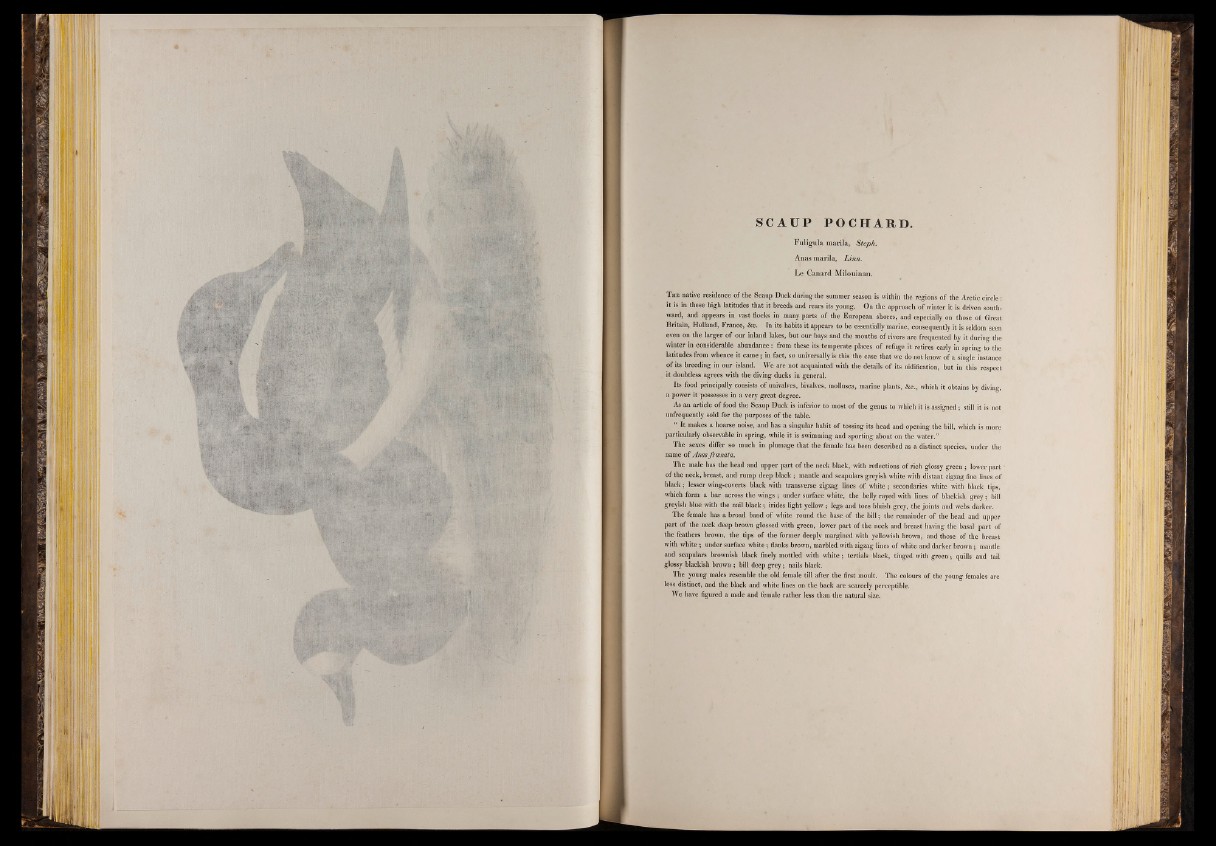
SCAUP POCHARD.
Fuligula marila, Steph.
Anas marila, Lin n .
Le Canard Milouinan.
T he native residence of the Scaup Duck during the summer season is within the regions of the Arctic circle:
it is in these high latitudes that it breeds and rears its young. On the approach of winter it is driven south-
ward, and appears in vast flocks in many parts of the European shores, and especially on those of Great
Britain, Holland, France, &c. In its habits it appears to be essentially marine, consequently it is seldom seen
even on the larger of our inland lakes, but our bays and the mouths of rivers are frequented by it during the
winter in considerable abundance : from these its temperate places of refuge it retires early in spring to the
latitudes from whence it came; in fact, so universally is this the case that we do not know of a single instance
of its breeding in our island. We are not acquainted with the details of its nidification, but in this respect
it doubtless agrees with the diving ducks in general.
Its food principally consists of univalves, bivalves, mollusca, marine plants, &c., which it obtains by diving,
a power it possesses in a very great degree.
As an article of food the Scaup Duck is inferior to most of the genus to which it is assigned; still it is not
unfrequently sold for the purposes of the table.
“ It makes a hoarse noise, and has a singular habit of tossing its head and opening the bill, which is more
particularly observable in spring, while it is swimming and sporting about on the water.”
The sexes differ so much in plumage that the female has been described as a distinct species, under the
name of Anas frcenata.
The male has the head and upper part of the neck black, with reflections of rich glossy green ; lower part'
of the neck, breast, and rump deep black; mantle and scapulars greyish white with distant zigzag fine lines of
black; lesser wing-coverts black with transverse zigzag lines of white; secondaries white with black tips,
which form a bar across the wings ; under surface white, the belly rayed with lines of blackish grey; bill
greyish blue with the nail black; irides light yellow; legs and toes bluish grey, the joints and webs darker.
The female has a broad band of white round the base of the bill; the remainder of the head and upper
part of the neck deep brown glossed with green, lower part of the neck and breast having the basal part of
the feathers brown, the tips of the former deeply margined with yellowish brown, and those of the breast
with white ; under surface white; flanks brown, marbled with zigzag lines of white and darker brown; mantle
and scapulars brownish black finely mottled with white; tertials black, tinged with green; quills and tail
glossy blackish brown ; bill deep grey; nails black.
The young males resemble the old female till after the first moult. The colours of the young females are
less distinct, and the black and white lines on the back are scarcely perceptible.
We have figured a male and female rather less than the natural size.